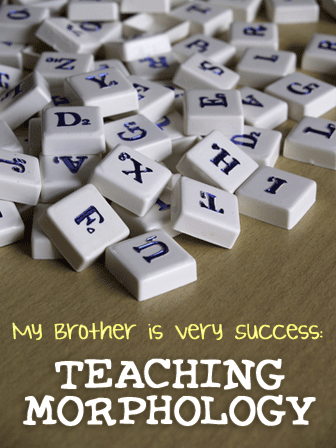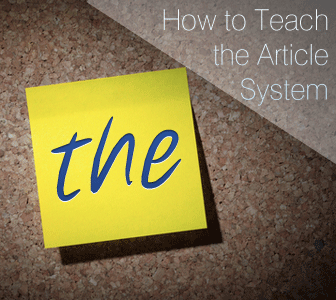My Brother is Very Success: Teaching Morphology


He usually looks confused. “No. It’s the free country. Not the only free country.”
“Oh, but the free country actually means the only free country,” I explain.
His continued look of puzzlement tells me it’s time for instruction in the article system in English. Mistakes like “America is the free country” indicate a confusion with articles, or words like “a,” “an,” and “the.” This confusion is common among ESL students, largely because many languages have no article system or one radically different from the one in English. It is often this confusion over the use of articles that clearly distinguishes a native from nonnative speaker - even if the nonnative speaker is perfectly intelligible. Native speakers almost never make mistakes in article use; in addition, articles are so hard for nonnative speakers to learn. Therefore, the use of articles clearly distinguishes native from nonnative speakers who are otherwise strong speakers, so this is an area that should be focused on to build the competency of our ESL students.


Generally speaking, any learning occurs best in its authentic context, and this is especially true of language learning. Language does not occur is isolated individual words and should not be taught that way. Articles occur with nouns, so when teaching new vocabulary that includes nouns, these nouns should be taught with the articles they are used with: e.g., in the living room are an armchair, a coffee table, and the new television.
I would usually discourage teaching language in lists, but some lists, like a shopping list or list of items to pack for a trip, are authentic uses of language and an opportunity to practice articles: “a carton of milk,” “light bulbs for the downstairs lamp,” and so forth. Give students a topic for their list: e.g., “You are shopping for a dinner for someone you want to impress, like the president of your book club. What do you absolutely need to buy for the party? Discuss with your peers.” As students discuss and write their lists, they will be using articles.
Read a paragraph from your textbook aloud to the class. Have students follow along in their books. Then together note the use of articles. Discuss why the author made the choices he or she did with articles. How would the meaning change if another article were substituted?
Give out a paragraph with the articles deleted. Have students work in pairs to decide which articles should be filled in. Reading aloud often helps because often students who are at the intermediate level and higher have developed a sense of the “sound” of the language, of what sounds right and what doesn’t.
Have students discuss in small groups a topic that will demand multiple uses of different articles: “An Ideal Vacation,” for example, will call upon both uses of articles in both the general for abstract discussion of vacations and the specific article for more specific places. Circulate as students talk, mentally noting any common problems, and then at the end pull the class together for a brief discussion.
Have students write a short essay whose topic will call upon article use: the topic “A Good Leader,” for example, is likely to call upon multiple uses of articles as students discuss both leaders in general and specific leaders.
Have students edit their own or their peers’ work. When handing back an essay, for example, have students look over their own papers, or trade with peer, focusing just on the articles. Again, have students read parts aloud, marking in pencil areas of concern. Circulate and answer questions as needed.
However, incorrect article use does tend to mark the speaker as a learner of English, and more correct usage shows someone who has nativelike speech, so article use is an important area to address with students.